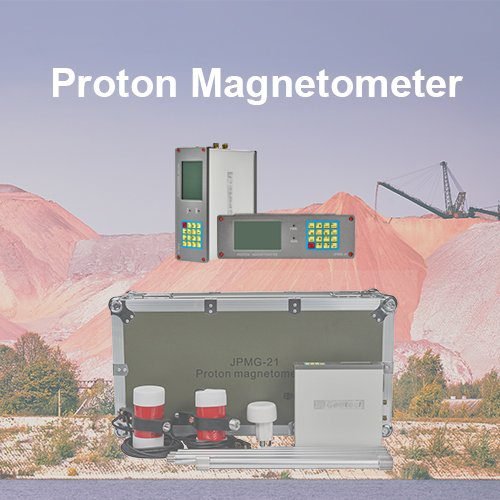Welcome to Geotech!

Magnetometers in Electromagnetic Surveys: From Principle to Field Use
TIPS:Dive into electromagnetic surveys with magnetometers. A magnetometer, key in geophysical work, uses unique mechanisms to catch subsurface anomalies. Explore how magnetometers power electromagnetic surveys, unlocking resource exploration and research insights. Start the journey of understanding magnetometers in EM surveys.

Ⅰ. Introduction
In geophysical electromagnetic surveys, magnetometers are key. They use unique mechanisms to catch subsurface electromagnetic anomalies. These anomalies help with resource exploration and geological research. How do magnetometers work in such surveys? Let’s find out.
Ⅱ. Links Between Electromagnetic Surveys and Magnetometers
1. Core Needs of Electromagnetic Surveys
Electromagnetic surveys detect subsurface geological bodies’ electromagnetic differences. This helps find geological structures and minerals. To do this, sensing magnetic field changes precisely is critical. Underground ore bodies and rock layers cause magnetic field abnormalities. Catching these anomalies provides analysis clues. Magnetometers are the core for sensing these fields.
2. Magnetometers’ Role in Surveys
As magnetic field sensors, magnetometers act as the “eyes” of surveys. They turn magnetic field changes into analyzable data. Whether it’s natural geomagnetic tweaks or underground – caused anomalies, magnetometers spot them. In surveys, they collect basic data. Their performance shapes result accuracy.
Ⅲ. How Magnetometers Work in Electromagnetic Surveys
1. Electromagnetic Induction Principle (Induction Magnetometers)
Some magnetometers use electromagnetic induction. Induction magnetometers have coils. These coils catch induced currents from field changes. When subsurface anomalies alter the field, coil magnetic flux changes. This creates an induced electromotive force. It becomes an electrical signal for analysis. For example, when finding metal ores, induction magnetometers catch ore – caused field disturbances.
2. Teamwork of Multiple Magnetometer Types
In surveys, one magnetometer doesn’t work alone. Types like proton precession and optical pumping magnetometers team up. For large – scale exploration, a wide – coverage magnetometer scans first. Then, a high – precision one checks anomalies. This balance of efficiency and precision analyzes the subsurface electromagnetic environment.
Ⅳ. Magnetometers in Action: Application Examples
1. Mineral Exploration Precision
Magnetometers shine in metal ore searches. Take iron ore: its ferromagnetic minerals cause strong field anomalies. During surveys, magnetometers collect data along lines. Analyzing abnormal peaks spots ore locations. Many projects use this to find rich iron ores via drilling, boosting efficiency.
2. Geological Structure Details
Magnetometers help study structures like faults and folds. Rocks in different structures have varied electromagnetic properties. These cause magnetic field changes. Magnetometer data becomes contour or cross – section maps. Geologists use these to rebuild structure shapes, aiding geological evolution research.
Ⅴ. Magnetometers: Development and Challenges
1. Tech Upgrade Trends
With electronics and materials science, magnetometers get more precise and sensitive. New sensors catch weaker anomalies, finding deep hidden ores. Intelligent features add too—automatic data processing and real – time anomaly feedback speed up surveys.
2. Real – World Challenges
Complex environments (strong interference, high – permeability rocks) hurt accuracy. Resisting interference is urgent. Different terrains (mountains, deserts) make installation and data collection hard. Equipment adaptability and methods need optimization.
Ⅵ. Conclusion
From induction principles to mineral exploration, magnetometers are core in electromagnetic surveys. They detect subsurface anomalies well. Despite challenges, innovation will boost their role in geophysical exploration. They’ll keep unlocking geological mysteries.
Reference
- Society of Exploration Geophysicists (SEG) https://seg.org/
- Society of Environmental and Engineering Geophysicists (EEGS) https://www.eegs.org/
- Geology and Equipment Branch of China Mining Association http://www.chinamining.org.cn/
- International Union of Geological Sciences (IUGS) http://www.iugs.org/
- European Geological Survey Union (Eurogeosurveys) https://www.eurogeosurveys.org/
-1.png)


